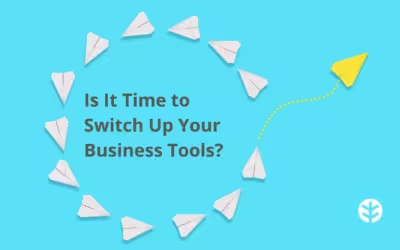If you’re reading this you know on a deep level that becoming a yoga teacher is more than a career choice… it’s a calling. As a practitioner, yoga has most likely given you a sense of fulfillment that you’re compelled to share with others, and you’re probably looking for the best way to become a yoga instructor. Fortunately, with some dedication, training, and courage to put yourself out there, you can make this dream a reality.
Table of Contents:
- What to Know About a Career in Yoga
- How to Become a Certified Yoga Instructor
- What to Look for in a Yoga Teacher Certification Program
- How to Build a Successful Career in Yoga
What to Know About a Career in Yoga
To become a yoga instructor is to become a transformer of lives, a champion of health and wellness, a community builder, a spiritual guide, a personal advocate, and so much more. When you become a yoga teacher, you are continuing a 5,000+ year tradition started in India as a spiritual discipline for achieving unity of mind, body, and spirit.
Understanding the origins of practices like pranayama (breathwork), asana (physical poses), or mantra chanting can be an endless source of inspiration for the aspiring yoga instructor.
But to teach yoga today, most studios (and students) require the completion of a yoga teacher certification or training program. Training to become a yoga teacher isn’t for the faint of heart – it is serious and intense, as it should be. You’re beginning a lifelong path of helping people connect their minds, bodies, and spirits.
Key fields of study for an aspiring yoga teacher:
- Methodology
- Anatomy
- Alignment cues
- Sequencing
- Adjustments
- Philosophy
How to Become a Certified Yoga Instructor
Simply put, a yoga teacher certification indicates a higher standard of expertise and competence, giving students and potential employers a reason to put their faith, bodies, and practices in your hands.
Yoga teacher certification training programs transform passionate students into informed, responsible instructors ready to lead others in a classroom, one-to-one, or online setting.
So, now you may be wondering what a certification program looks like.
- A certification program’s 200-hour curriculum will immerse you in yoga methodology, alignment principles, anatomy, assisting, sequencing, philosophy, and more.
- Expect days filled with practice teaching sessions where you’ll lead sample classes and then receive mentor feedback.
- Outside of core instruction time, there may be early mornings refining your asana routine and evenings spent studying anatomy.
The workload will be demanding, but when you graduate, you will have the skills and knowledge to keep students physically and emotionally safe – and a foundation to build your unique, authentic practice.
Wondering where to begin as a new yoga teacher?
Watch our webinar with Shannon Crow to learn how to start a successful career as a yoga teacher.
What to Look for in a Yoga Teacher Certification Program
Unfortunately, not all yoga teacher training programs meet the same high standards – some should be flat-out avoided. So what should you look for, and what should you avoid? Here are some basics to get you started.
Look for programs that:
- Promote safe alignment, injury prevention, and respect
- Provide in-depth anatomy training and emphasize yoga philosophy/ethics
- Balance practice teaching with compassionate feedback
- Incorporate self-study time
Avoid programs that:
- Rush through content, especially anatomy and alignment principles
- Lack clear codes of ethical conduct or that fail to address injury risk.
- Give inadequate practice teaching and feedback
- Are completed in less than a month
Before committing to a program, ask for a list of previous graduates to contact for reviews.
In-Person vs Online
While nothing compares to the hands-on experience of in-person yoga teacher certification and training, online yoga instructor training through reputable schools can still provide a thorough education.
Here are some considerations when comparing in-person vs online yoga instructor education.
In-person training:
- Allows for hands-on adjustments and feedback as you practice with students in the same physical space
- Get more guidance to find your own voice as an instructor
- Work with real bodies to see how they respond to your instruction
- Builds community and relationships with a cohort you can learn and grow with
- Requires on-site attendance is demanding with long training hours.
- Can cost thousands more than online options.
Online training:
- Provides more flexibility to fit coursework around your schedule
- Teaching methodology and adjustments may be more challenging to grasp without in-person guidance
- May be more difficult to build connections with peers
- May lack the nuance of human feedback and can seem more critical without tone of voice or body language for context
- Saves you money on travel, allows you to train from anywhere at your own pace
3 Tips for Choosing a Great Yoga Teacher Training
Research the Best Programs
- How established is the program
- Do new teachers get hired out of the program?
- Does the hosting studio hire teachers out of the program?
- Talk to former graduates and seek out recommendations
- Compare price points on other comparable teacher training
- Is it teaching a style of yoga that lights you up?
- Is it important for you to train with a Yoga Alliance-registered school?
- Is your preference online or in-person?
Quantify
- How many styles of yoga does it cover?
- How many faculty members are delivering the curriculum?
- How experienced are the faculty members?
- Is there diversity in the faculty?
- Does the program cover all the limbs of yoga or only asana?
Ask questions
- A good YTT will be open to all your relevant questions about their ethics, diversity, and representation of yoga.
- What is the program’s success rate – do the graduates feel able to teach right away?
How to Build a Successful Career in Yoga
Congratulations! You’ve put in the hours, the effort, the sweat, and the passion to become a certified yoga instructor. So, where are all your adoring students?
Typically, you’ll need to put in a little effort to grow your student base.
In this section, we’ll give you a high-level view of some key considerations and steps to establish a strong foundation for your career as a yoga instructor and grow your yoga business at a pace that works for you.
Find Your Niche
Take a moment to think about your approach, abilities, philosophy, goals, and teaching style –
- Where do you shine?
- What are your strengths?
- What do you want to accomplish?
Asking yourself reflective questions like this is the best place to start when defining what makes you and your fledgling business stand out. Once you find this, define it, and develop it, you will have found your niche.
It’s okay if you don’t have it all figured out right now. Perhaps you discovered it during your Yoga Teacher Training (YTT). Maybe it’s something deep in that calling that inspired you to become a yoga instructor.
It could be a combination of those things and a dozen more. But, more often than not, it becomes clear after you’ve been teaching yoga for a while.
Get a CPR Certification
While life-threatening emergencies are rare, having CPR training (cardiopulmonary resuscitation), most studios require teachers to have this.
Knowing basic life support skills like administering chest compressions, using an AED (automated external defibrillator), and opening airways for rescue breaths could one day save a student’s life.
More than just a safety asset, this training represents the care and commitment teachers devote to their students’ well-being on and off the mat. As part of your role as a personal health and wellness advocate, your CPR knowledge also spreads awareness for recognizing the warning signs of cardiac arrest, heart attack, or other medical issues.
Staying current with CPR protocols through a certification renewal every two years is a minimal time investment that provides comfort if a crisis hits.
Get Yoga Teacher Insurance
Auto insurance? Check. Home insurance. Yes, please. Yoga instructor insurance? Sign me up! Whether you teach independently or through a studio, yoga insurance protects you from claims over injuries or accidents.
Even if you aren’t required to get insurance, it’s highly recommended to protect you in case of a lawsuit – without it, the claim might be brought against your home insurance.
Yoga studios often require yoga teachers to have yoga liability insurance. If a teacher is hired as a contractor, they will need to get their own. If they’re hired as an employee, the studio covers it.
However, the exact requirements for what type of insurance you need may vary by studio. You have a bit more flexibility if you are an independent yoga instructor.
beYogi Insurance
beYogi insurance is an affordable, mobile, and comprehensive yoga instruction liability insurance. beYogi provides both general and professional liability coverage that puts your career – and your well-being – first.
We’ve partnered with beYogi to bring their insurance to OfferingTree users at a discounted rate.
Dig in and decide if beYogi is right for you:
- Professional & General Liability: up to $2 Million per occurrence / $3 Million per year
- Product Coverage: $2M annual aggregate
- Damage to Rental Premises: $100,000
- Identity Protection Coverage: $25,000
- Stolen Equipment Coverage: $1,000 w/ a $250 deductible
- Annual fee: $159 part-time / $179 full-time
Create a Website & Online Presence
As a new yoga teacher, making a special space in a cozy corner of the internet is a valuable way to showcase yourself, your practice, and your business. That means a website (don’t worry, OfferingTree makes it super easy to set up your website).
Potential employers and students alike will check you out online – to get a sense of your offerings, teaching philosophy, professionalism, social media, and online community – before engaging with you. Don’t worry, that’s totally normal.
Some studio contracts include the requirement to promote your classes on your social media platforms, so having a solid online presence will set you up as a good prospect. Similarly, students will check the same channels to ensure you’re “legit.”
But the value of a website and social media presence cannot be understated. You can use your social media to share studio information, insights, promotions, workshops, and events and attract the best clients for your business. More than that, it gives your community direct access to your experience, philosophy, and wisdom.
- Create a website and keep it current
- Engage with your community on social media
- Consider online classes and on-demand video content to “introduce” your practice
Continue Cultivating Your Practice
Most teachers are not ready to teach immediately after completing YTT. Practice with friends, real people, and real bodies to find your own voice. This takes time, so don’t rush it. Some studios offer apprenticeships.
Ultimately, your teaching can only be as strong or effective as your own personal practice. Some studios will offer free classes to instructors and subs as part of their contract, but if that isn’t available, be sure you carve out a little, regular time for yourself, even in your own space.
Retaining the passion and joy of your yoga is crucial when it comes to being a successful teacher, as that passion translates into every class you teach.
Market Yourself
Okay. Deep breath. Marketing strategies are essential for any business – that includes your yoga teaching. Luckily, developing a marketing strategy and putting yourself out there in the market doesn’t have to be complicated, daunting, or scary. Think about it as bringing your enthusiasm for practice and business to a broader audience.
Marketing tools you find in business management software like OfferingTree give you the power to create automated email sequences triggered when users take certain actions on your website. Automations can save you a ton of time while ensuring your audience stays engaged!
It does take some work, but it’s worth it, especially for yoga instructors and studios after the recent rise in online fitness platforms. And it doesn’t all have to be online – word of mouth, flyers, and in-person events are also effective.
Marketing is your chance to showcase your brand and studio to potential clients in your own way. Here are some basics and resources to get you started:
- Create a Website
- Establish a Google Business Profile
- Email Marketing
- Post Flyers
- Post on Social Media
- Referral Program
- Do a Special Event
- Partner with Local Businesses
- Social media paid ads
- Google ads
- Sign up for a Canva account (free or paid)
- QR codes
However, if your goal is to work for a studio, not run your own business, we recommend taking classes and engaging with the studio that you want to work for.
Did you know free classes could actually help you grow your business?
Establish Yourself & Grow Your Yoga Practice with OfferingTree
It’s time. It’s time to take your passion for yoga and all it brings to the next level – whatever that means for you. Offering Tree is here to help you simply and easily extend all your hard work, dedication, and love for the practice into a fulfilling career for you and your students. Wherever you are in your journey, we have the tools to help you establish yourself, grow, and thrive. Get started with your 14-day free trial today!








